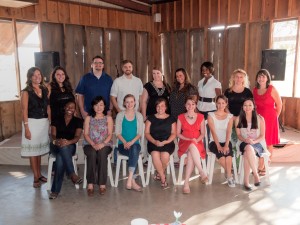Machismo in Therapy
By: Mike Ford
The popular perception of machismo depicts Latin men as aggressive, abusive, domineering, womanizing alcoholics (Arciniega, Anderson, Tovar-Blank, & Tracey, 2008; Mayo & Resnick, 1996; Baldwin & DeSouza, 2001). Much of the psychological literature endorses this negative conception largely due to a slant in the measures developed in search of the negative components of machismo (Arciniega, et al., 2008). Machismo cannot adequately be analyzed apart from marianismo (or, as it is called in Brazil, Modelo de Maria – Model of Mary). Baldwin and DeSouza (2001) consider marianismo along with machismo as the major influences in the construction of gender roles in Brazil. This holds true of all Latin American countries founded on the influence of Roman law and the Catholic Church (Mayo & Resnick, 1996). Marianismo is characterized by passivity and submissiveness based upon a virgin-like image of Maria, the mother of Jesus (Mayo & Resnick, 1996). This view creates the basis for the development of the core qualities of machismo. But, as research demonstrates, machismo projects various facets of which the popularized negative definition portrays only part of the picture. In a study by Afredo Mirande, only half of Latino men perceive machismo as a negative construct whereas 35% affirm it as a “source of pride and honor” (Arciniega, et al., 2008, p. 19).
Falivcov (2010) indicates that this is demonstrative of the multidimensional qualities of machismo which lie along a continuum of positive to negative attributes. She labels the negative attributes as indicative of a false masculinity called machista whereas; the positive attributes allude to authentic masculinity referred to by the term hombre or, varon (Falicov, 2010). Other delineations specify more extreme positions on the continuum such as caudillo (Mayo & Resnick, 1996) which exemplifies the highest level of masculinity defined by respect, power, rectitude and affection for those under his protection. Caballerismo denotes a masculinity based on a code of chivalry much like that of Don Quixote (Arciniega,et al., 2008). An extreme negative connotation is found in the term macho which is animalistic in nature (Falicov, 2010; Mayo & Resnick, 1996). Though foundational in the development of the gender role for Latin American males and, though employed in a variety of forums both popular and academic, the concept of machismo has yet to be clearly defined (Arciniega, et al., 2008) and the vagueness of the term obscures one’s understanding of Latin masculinity.
Therefore, when a Latin male presents himself for therapy, is machismo perceived as a problem or a component for possible solutions? If attributes from the negative end of the machismo continuum contribute to the presenting problem, rather than attempting to dismantle innate traits of machismo one might better succeed in calling out the more noble facets of machismo in order to redirect the intrinsic nature of Latin masculinity toward positive relational attributes. Calling upon the virtues of familismo (devotion to family) (Falicov, 2010), the chilvary of caballerismo (Arciniego, 2008), along with the innate affection and generosity of the Latin male one may be able to redirect the Latin husband or father toward a path of benevolent machismo (Falicov, 2010), opening up a variety of solutions for the presenting problem.
References
Arciniega, G. M., Anderson, T. C., Tovar-Blank, Z. G., & Tracey, T. J. G. (2008). Toward a fuller conception of machismo: Development of a traditional machismo and caballerismo scale. Journal of Counseling Psychology, 55(1), 19-33.
Baldwin, J., & DeSouza, E. (2001). Modelo de Maria and machismo: The social construction of gender in Brazil. Interamerican Journal of Psychology, 35(1), 9-29.
Falicov, C. J. (2010). Changing constructions of machismo for latino men in therapy: “The devil never sleeps.” Family Process, 49(3), 309-329.
Mayo, Y. Q., & Resnick, R. P. (1996). The impact of machismo on Hispanic women. Affilia, 11(3), 257-277.



